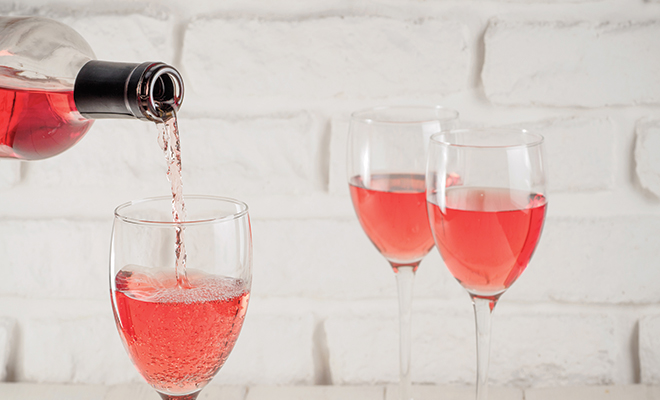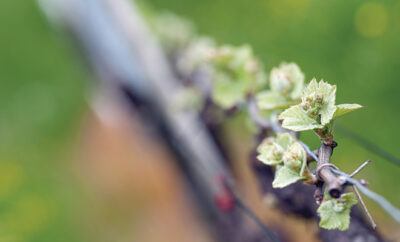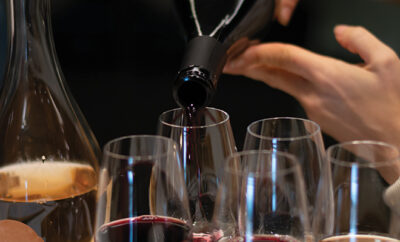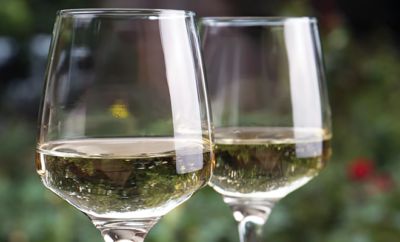
Bouquet of Rosé
During Cupid’s Valentine month of greeting cards, chocolates, romantic dinners and gifts, add in a little rosé love!
Although rosé wines are lovely all year long, this month is a perfect time to celebrate the selections of rosé wines available to us. One of my favorite white wines, rosé is enjoyable with appetizers, cheeses and poultry as well as poolside during the warmer time of year.
Rosé is a beautiful style of wine with appeal across the spectrum of wine lovers. From small half-bottles to sparkling wines, rosé has found a resurgence in the marketplace and is once again at our festive tables all year around.
Rosé has worked hard for our attention. The wine has overcome the image of being too sweet and it’s no longer confused with white zinfandel, which took the wine shelves by storm in the 1980s. Not all rosé is white zinfandel! Rosé can be made from merlot, syrah, mourvedre, grenache, pinot noir, tempranillo, zinfandel and many others, which makes tasting rosé so interesting!
Pretty Wine
Let’s begin with the color. Rosé wines are considered a white wine, not a red wine, because of the process. The color comes from the limited contact with the black-skinned wine grapes that impart the pink hue to the wine. Depending on the type of grape that is used and the grape skins that are imparting color, a rosé wine can range in color from a pale orange to a shade of deeper purple.
Each winemaker uses different techniques to achieve the perfect balance they are striving for. Setting out to make a beautiful rosé wine, winemakers most often use a saignée method. During fermentation, the winemaker “bleeds off” a generally light portion that is fermented into rosé. A third method of making rosé wine is to blend a white and red wine, but most winemakers call that a blended wine and not a true rosé.
When you look at the rosé spectrum, the colors range from a lovely pale pink to a rich garnet color. Be sure to enjoy your rosé wines within one to three years. Tannins keep wines aging well, and rosé wines tend to be lower in tannins due to the nature of their production.
But how does it taste? Now that you’re looking for the perfect rosé, you’ll notice the variety of still wines and sparkling wines that range widely in sweetness and dryness. You can look on the wine label description for some key words as a guide, or ask your favorite winery or wine expert what they would recommend.
Dry or Sweet
If “Provençal” is listed, it will taste dry on the palate and be perfectly suited for savory appetizers and foods including barbecue. This is considered an old-world style. When you see the description “off-dry,” you can anticipate sweetness: the residual sugar in the wine works its magic as you enjoy a spicier menu. If the label lists the rosé of Zinfandel or Pinot Noir grapes, you’re in for a special treat; these wines lend themselves easily to a crisp, light aura of passion fruit or melon when done in a rosé style with a bit of sweetness. The new-world rosé style will be on the sweeter side.
Floral or Fruity
When served chilled, rosé wines can be immensely refreshing all year long. Essences of strawberry, watermelon, banana and mint can be wonderful complements to creamy sauces, dips and Greek and Mediterranean foods, including the dipping sauces that accompany dolmas and other appetizers.
Savory
Believe it or not, when you taste the dry versions of rosé wines, you may get a sense of olive and white pepper on the tongue if the rosé was made from syrah, cabernet franc or tempranillo. Even allspice and almond or pecan flavors can present themselves.
What’s wonderful about this beautifully pink wine is that it has enough muscle to go with barbecued turkey, smoked meats and fish, grilled burgers and vegetables as well as Chinese or Thai takeout. One of my favorite rosé pairings is a gorgonzola-prosciutto pizza at my local eatery.
If you want to try a rosé adventure, I’d recommend seeking out Cotes du Rhone on the label. The wines of this style and region tend to be a little drier but also a little higher in alcohol, which makes this lovely wine an easy sipper with very low acid. For a sweet finish to a meal, angel food cake and shortcake with a light creamy fruit topping have been my favorite desserts to serve with chilled rosé wines. Truffles of divinity, caramel-marshmallow creams and macadamia nuts are also a good pairing.
Make it fun and select a dozen bottles of rosé to celebrate the month of February. Your tasting adventure will be as enjoyable as the flowers in the vase! ■
Sources: buzzfeed.com and winefolly.com.







